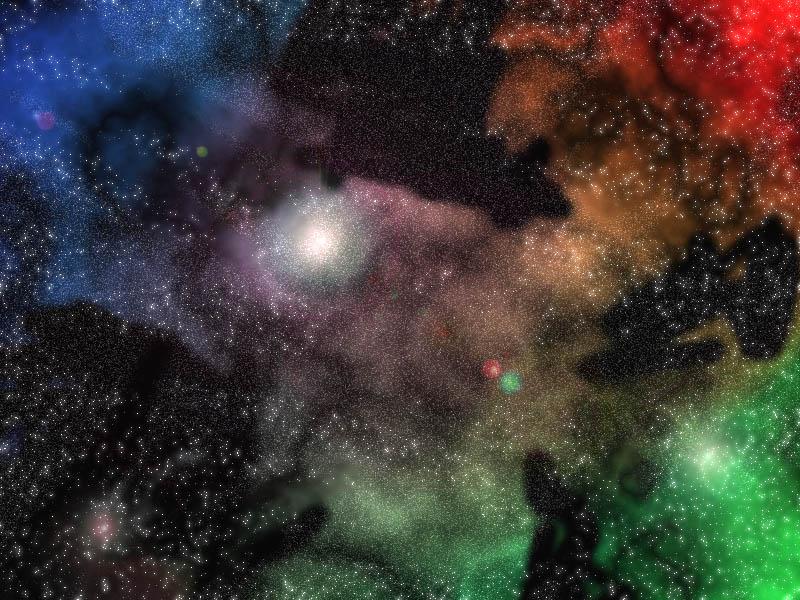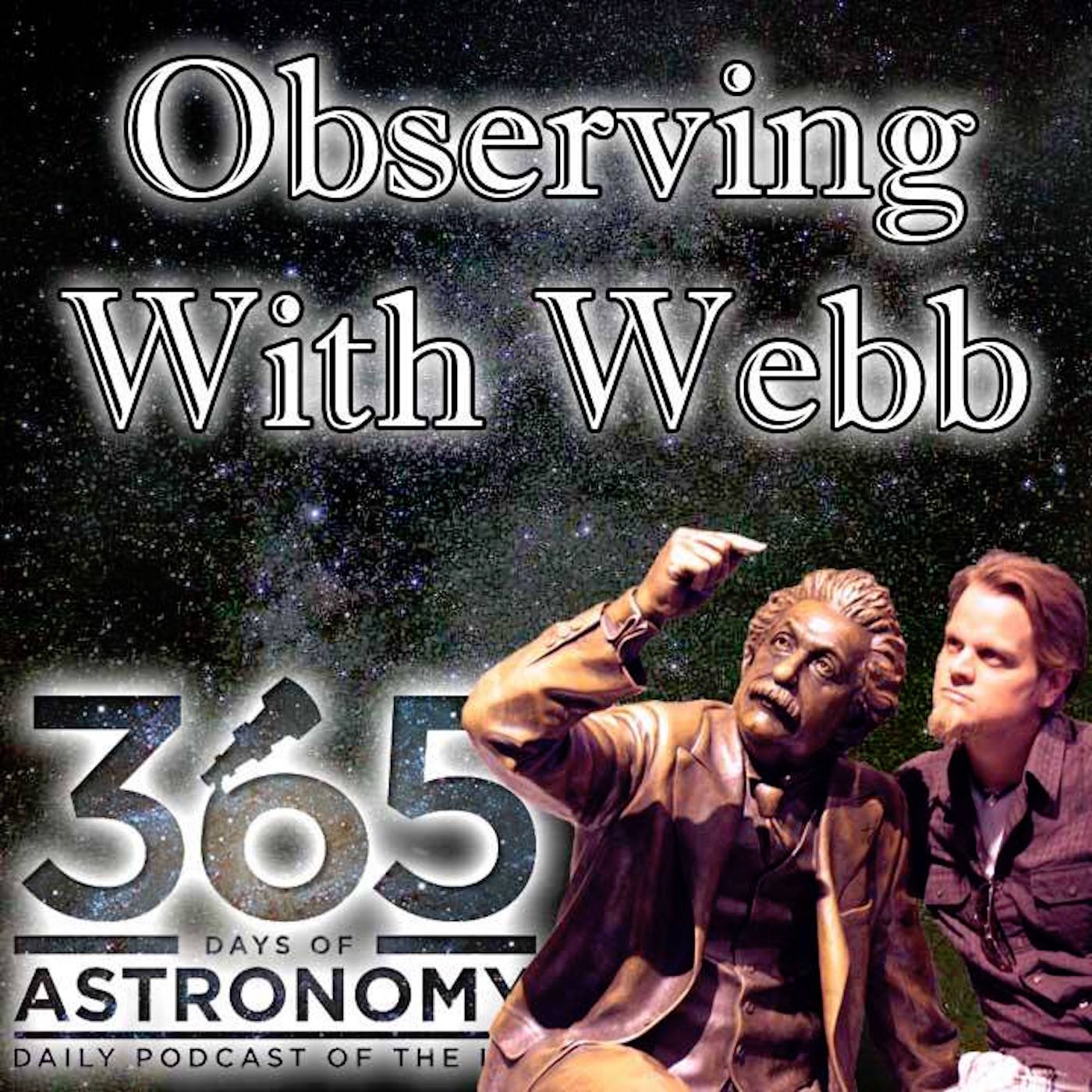Episodes

Thursday May 30, 2013
June 2013
Thursday May 30, 2013
Thursday May 30, 2013
Not much going on in June astronomically other than the summer solstice and some of the regular close encounters, but I'll take it, considering the end of school and the ever-getting-closer due date of the next astronomer with the last name of Webb. Or Vigilante-Webb. EVENTS...
New Moon - 8th (darkest skies)
10th - Close Encounter - Moon, Venus, & Mercury - Look West after the Sun sets. On the 10th, the Moon will be VERY thin, since it was just new, and will probably necessitate binoculars. However, if you find it, Venus will be about 8˚ to the right of it with Mercury up and to the left. Venus will be the first "star" you'll see in that direction.
First Quarter Moon - 16th (Visible until midnight)
18th - Close Encounter -Venus & Mercury - Look West after sunset and wait for Venus to appear as the first "star" in that direction. With binoculars, look 2˚ left and you'll find Mercury. A pretty close encounter.
18th - 19th - Close Encounter - Moon & Saturn - The waxing gibbous Moon will be about 10˚ to the right of Saturn on the 18th and 7˚ to the left and down on the 19th. Try binoculars or a telescope to the rings that Galileo called "ears" through his telescope.
21st - Summer Solstice - This is the longest day of the year in the Northern Hemisphere. There's a bit of explanation as to why here.
Full Moon - 23rd (Visible all night - East around sunset, West around Sunrise) - Coincidentally this is the largest full Moon of 2013, which is only 13% bigger than the smallest full Moon.
Last Quarter Moon - 30th (Visible from midnight into the morning)
PLANETS...well, the ones visible with your naked eye Planets you can see around Sunset - Venus, Mercury (W), Saturn (SE) Planets you can see throughout the night - Saturn (SEàSàW) Planets you can see in the Morning - NoneMercury - You might be able to catch Mercury in the West 45 minutes after sunset. Bring your binoculars. Find Venus (the much brighter one) and Mercury will be up and to the left, unless you're looking in late June, at which point Mercury moves close to the Sun.
Venus - Sets pretty quickly after sunset, but will be in the West. Closest to the Moon on the 10th.
Mars - In the Sun's glare. (is technically behind the Sun)
Jupiter - In the Sun's glare (is technically behind the Sun)
SATURN - Great time to check out Saturn! Look SE after sunset to find the very bright object that is Saturn. It will rise throughout the night, heading toward the South, and setting in the west around 3am. Close to the Moon on the 18th and 19th. Use binoculars or a telescope and try to see its rings, or as Galileo called them, "ears".
CONSTELLATIONS... (see sky map link at the bottom for a Star Map for this month - or ask Mr. Webb) Look straight up and you'll see...After Sunset (sunset is around 8:30pm) - Bootes (The shepherd, kite, or ice cream cone). You can follow the arc of the Big Dipper's handle to get to its brightest star Arcturus.
Midnight - Hercules - Extra Challenge! Look for M13, the Hercules Cluster in between two of Hercules' "keystone" stars. It known as the best globular cluster in the northern skies. It will be a fuzzy spot in binoculars and will be even cooler through a telescope
Early Morning - Lyra, Cygnus, Lacerta - These are the Summer constellations, and since they are starting to rise in the morning now, that means that summer is on its way. Extra Challenge! Look for M57, the Ring Nebula in between two of Lyra's stars. It is 2,300 light years away, which means we're seeing what it looked like 2,300 years ago. The shell that you see is the remnants of the central star that blew up some 20,000 years ago. It has a donut-like appearance through a telescope. It'll be easy to find, but tough to see in binoculars, so get the scope out for this one.
GENERAL CONSTELLATION FINDING TIPS:Spring constellations: Bootes, Virgo, Leo, Corona Borealis, Hercules.
First find the Big Dipper in the North (a North Circumpolar Asterism that never sets) and look at the handle. Starting at the star closest to the "cup" part, follow the rest of the stars in the handle and follow the arc to Arcturus. Arcturus is the brightest star in Bootes the Shepherd. Some say he looks more like a kite, others say more like an ice cream cone.
Then, following the same "arc", speed on to Spica. Spica is the brightest star in Virgo. Virgo's a dimmer constellation, so you'll be rewarded when you find her.
To the left of Bootes is Corona Borealis. This is a small collection of stars that make a crown, cup, or U shape in the sky.
To the left of Corona Borealis is the great constellation of Hercules. Hercules is the Hero of the sky and has a central "keystone" asterism, in which lies M13, the Hercules Cluster.
Lastly, Leo is a constellation consisting of a backward question mark (or sickle) and a right triangle to the left. Use the two Big Dipper "cup" stars that are in the middle of the Big Dipper and follow the line they make to the bright star Regulus, the brightest star in Leo.
Use a sky map from www.skymaps.com to help you out.
Saturday May 04, 2013
May 2013
Saturday May 04, 2013
Saturday May 04, 2013
May means it's getting warmer, but the nights are getting shorter. This year we have two good conjunctions in the sunset sky that don't happen very often, as well as some lunar close encounters as usual. EVENTS...
Last Quarter Moon - 2nd (Visible from midnight into the morning)
New Moon - 9th (darkest skies)
10th - 12th - Close Encounter - Moon, Venus, & Jupiter - Look West as the Sun sets. Once the Sun is gone from view, find the Moon. On the 10th, the Moon will be VERY thin, since it was just new, and will probably necessitate binoculars. However, if you find it, Venus will be about 2˚(two pinky-widths at arm's length) up and to the right of it and Jupiter about 20˚(two fist-widths at arm's length) up and to the left. Venus and Jupiter will be the first "stars" you'll see in that direction. On the 11th, the Moon will be about halfway in between Venus and Jupiter, and a tiny bit thicker. Then on the 12th, with Venus still very low on the horizon, the more easily visible crescent Moon will be about 5˚to the left of Jupiter.
First Quarter Moon - 18th (Visible until midnight)
22nd - Close Encounter - Moon & Saturn - The waxing gibbous Moon will be about 5˚ to the right of Saturn. Try binoculars or a telescope to the rings that Galileo called "ears" through his telescope.
23rd - 31st - Close Encounter -Venus, Jupiter, Mercury - Look West as the Sun sets. Earlier in the month Venus was low and Jupiter was high. By this time, Jupiter has gotten much closer to Venus (from our perspective). Mercury also joins the party, which is difficult to express in writing here, so I would suggest using Google Sky on your smartphone, or a star chart, or Stellarium on your computer to see what happens over these 9 days. All in all, you can see all three of these planets within 5˚ of each other for 6 of these days. I would suggest bringing binoculars for some help.
Full Moon - 25th (Visible all night - East around sunset, West around Sunrise)
PLANETS...well, the ones visible with your naked eye Planets you can see around Sunset - Jupiter, Venus, Mercury (W) Planets you can see throughout the night - Saturn (SEàSàW) Planets you can see in the Morning - NoneMercury - Starting May 19th, you might be able to catch Mercury in the West after sunset. Bring your binoculars.
Venus - Sets pretty quickly after sunset, but will be in the West. Closest to the Moon on the 10th.
Mars - In the Sun's glare.
Jupiter - Last shot! Look West after sunset. It should be the brightest "star" in that direction. Close to the Moon on the 12th. Use binoculars or a telescope to try to see the four Galilean Moons. Sets earlier and earlier each day, fading from sight in June.
SATURN - Great time to check out Saturn! Look SE after sunset to find the very bright object that is Saturn. It will rise throughout the night, heading toward the South, and setting in the west around 5am. Close to the Moon on the 22nd. Use binoculars or a telescope and try to see its rings, or as Galileo called them, "ears".
CONSTELLATIONS... (see sky map link at the bottom for a Star Map for this month - or ask Mr. Webb) Look straight up and you'll see...After Sunset (sunset is between 8:00pm and 8:30pm) - Ursa Major's legs, Leo, Leo Minor -
Midnight - Bootes - find the Big Dipper's handle, and starting from the inside of the handle, follow the arc that those four stars make past the last star in the handle about 30˚ or three fist-widths to the next very bright star you find which is Arcturus, the base of the constellation Boötes. Hence astronomers use the phrase "Follow the Arc to Arcturus"
Early Morning - Hercules, Lyra, Cygnus - These are the Summer constellations, and since they are starting to rise in the morning now, that means that summer is on its way.
GENERAL CONSTELLATION FINDING TIPS: Spring constellations: Bootes, Virgo, Leo, Corona Borealis, Hercules.First find the Big Dipper in the North (a North Circumpolar Asterism that never sets) and look at the handle. Starting at the star closest to the "cup" part, follow the rest of the stars in the handle and follow the arc to Arcturus. Arcturus is the brightest star in Bootes the Shepherd. Some say he looks more like a kite, others say more like an ice cream cone.
Then, following the same "arc", speed on to Spica. Spica is the brightest star in Virgo. Virgo's a dimmer constellation, so you'll be rewarded when you find her.
To the left of Bootes is Corona Borealis. This is a small collection of stars that make a crown, cup, or U shape in the sky.
To the left of Corona Borealis is the great constellation of Hercules. Hercules is the Hero of the sky and has a central "keystone" asterism, in which lies M13, the Hercules Cluster.
Lastly, Leo is a constellation consisting of a backward question mark (or sickle) and a right triangle to the left. Use the two Big Dipper "cup" stars that are in the middle of the Big Dipper and follow the line they make to the bright star Regulus, the brightest star in Leo.
Use a sky map from www.skymaps.com to help you out.

